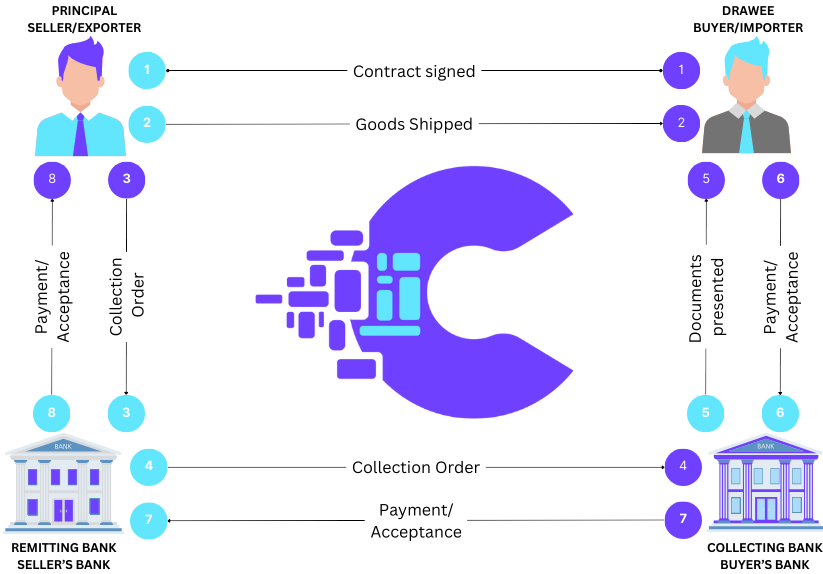What is Documentary Collection?
01 September 2023
DOCUMENTARY COLLECTION: QUICK OVERVIEW – HOW IT WORKS
A documentary collection is a method of payment in international trade where a seller/exporter instructs their bank to forward shipping and title documents to the buyer/importer’s bank, along with a request for payment or acceptance. This process is governed by the rules of the International Chamber of Commerce (ICC), specifically the Uniform Rules for Collections (URC 522).
Here is an overview of the documentary collection process:
- Sales Agreement: The buyer and seller agree on the terms of the sale, including the payment method, delivery terms, and other conditions. If documentary collection is chosen as the payment method, these terms are explicitly stated in the sales contract.
- Seller’s Shipment: The seller ships the goods to the buyer and obtains the necessary shipping and title documents, such as a bill of lading, invoice, packing list, and any other relevant documents.
- Seller’s Bank: The seller takes the shipping and title documents to their bank (the remitting bank) and requests that they send these documents to the buyer’s bank (the collecting bank) for further action. The seller’s bank will also provide instructions regarding whether the documents should be released to the buyer upon payment (sight collection) or acceptance of a bill of exchange (term collection).
- Collection Order: The seller’s bank sends the collection order along with the documents to the collecting bank. The collection order includes specific instructions on how and when payment or acceptance should be made. It may also include any conditions or terms specified in the sales contract.
- Collecting Bank’s Role: The collecting bank receives the documents and the collection order from the seller’s bank. They verify the documents for accuracy and compliance with the instructions provided. The collecting bank may hold the documents until payment is received (in a sight collection) or until the buyer accepts a bill of exchange (in a term collection).
- Buyer’s Responsibility: The buyer is notified by their bank that the documents have arrived. The buyer must review the documents and ensure they meet the terms and conditions agreed upon in the sales contract. If everything is in order, the buyer can make payment to their bank or accept the bill of exchange, depending on the terms of the collection.
- Payment or Acceptance: In a sight collection, the buyer’s bank releases the documents to the buyer upon receiving payment. In a term collection, the buyer’s bank releases the documents upon the buyer’s acceptance of the bill of exchange and a commitment to pay at a later date.
- Discrepancies: If there are any discrepancies in the documents or if the buyer disagrees with the terms, the collecting bank will communicate this to the seller’s bank, and they will work to resolve the issues. This may involve negotiations between the buyer and seller to amend the documents or terms.
- Payment to Seller: Once the buyer has made payment or accepted the bill of exchange, the collecting bank forwards the funds to the seller’s bank. The seller’s bank then credits the seller’s account with the proceeds.
- Delivery of Goods: With payment or acceptance secured, the collecting bank may release the documents to the buyer, allowing them to take possession of the goods from the carrier.

It’s important to note that documentary collections do not provide the same level of security as letters of credit, and the risk of non-payment or disputes still exists. Therefore, both parties should carefully review the terms and conditions of the documentary collection and ensure they are in agreement before proceeding with the transaction.
Apply now for an Avalisation Facility


